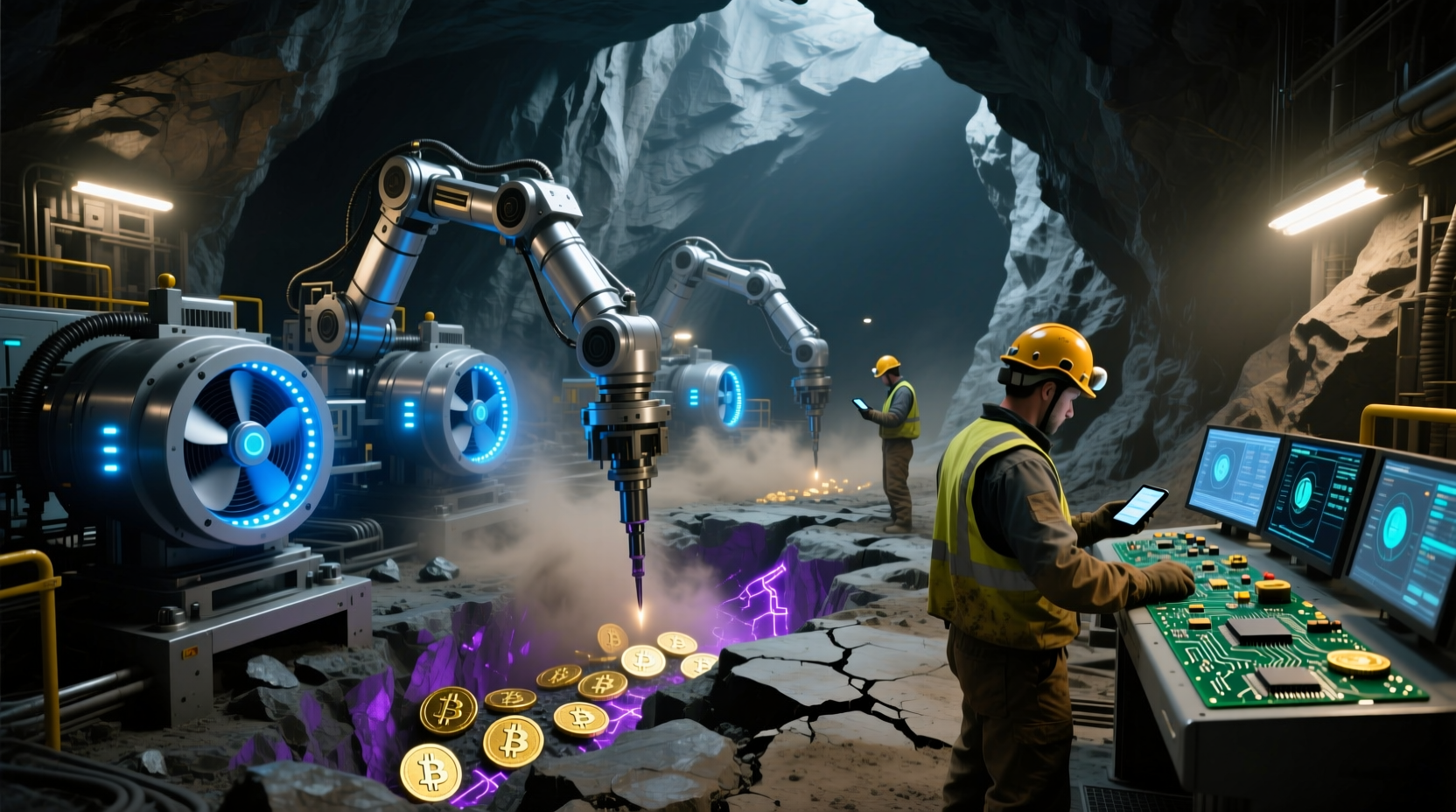Think of crypto mining as a giant digital treasure hunt where computers race to solve puzzles and earn rewards in the form of cryptocurrency. In the early days, a single miner with a decent computer could strike gold (or Bitcoin) on their own. But today, the race has gotten a lot tougher, competition is fierce, puzzles are harder, and the costs are sky-high. That’s where mining pools come in.
Key Points
- Think of crypto mining as a giant digital treasure hunt where computers race to solve puzzles and earn rewards in the form of cryptocurrency
- In the early days, a single miner with a decent computer could strike gold (or Bitcoin) on their own
- But today, the race has gotten a lot tougher, competition is fierce, puzzles are harder, and the costs are sky-high
Key points:
- Teamwork makes the crypto work as mining pools let miners combine their computing power to boost their chances of earning rewards more often instead of waiting for a solo win.
- Different payout styles offer flexibility with steady PPS earnings or riskier PPLNS rewards that can bring bigger returns.
- Balance is key since mining pools make crypto more accessible and stable, but too much centralization can chip away at blockchain’s core ideal of decentralization.
Instead of going it alone, miners now team up, combining their computing power to boost their chances of earning rewards. It’s like joining forces in a massive online co-op game where teamwork pays, literally.
What Are Mining Pools?
A mining pool is basically a team-up zone for crypto miners. Instead of one person doing all the heavy lifting to solve a blockchain puzzle, everyone in the pool combines their computing power to work together. Think of it like a group project where everyone contributes brainpower to finish faster, and this time, everyone actually gets rewarded.
Here’s how it works: each miner adds their hash rate (that’s the measure of their computer’s mining strength) to the pool. Together, the group has a much higher chance of solving the next block and earning the reward. Once the pool scores a win, the crypto reward is split among all members based on how much power they contributed. It’s teamwork with a crypto twist, turning what used to be a solo grind into a shared victory.
How Mining Pools Work
So, how do mining pools actually work? Picture it like joining a digital team: you sign up, plug in your mining hardware or software, and start contributing your hash power, the computing muscle that helps solve those cryptographic puzzles. The pool tracks how much power each miner adds and distributes rewards once the team hits a winning block.
Pay-Per-Share (PPS)
In the Pay-Per-Share model, miners get a steady payout for every valid share they submit. It’s like getting paid by the hour, you know what you’ll earn regardless of whether the pool actually mines a block that day. PPS is perfect for those who like consistency and want predictable income without worrying about luck or timing.
Related: Jump Trading Faces $4B Lawsuit For Rigging the Terra Collapse
Pay-Per-Last-N-Shares (PPLNS)
The Pay-Per-Last-N-Shares system is a bit more like a performance bonus. Instead of fixed pay, it rewards miners based on their contribution to the most recent successful blocks. The more you contribute and the longer you stick around, the more you stand to gain. PPLNS favors loyal miners who are in it for the long haul and don’t mind a little unpredictability for a shot at bigger rewards.
Either way, mining pools turn crypto mining into a team sport, giving everyone a chance to share in the success.
Why Join a Mining Pool?
Mining crypto solo can feel like buying one lottery ticket and hoping for the jackpot. By joining a mining pool, you’re teaming up with others to boost your odds of winning smaller, more regular prizes instead. Here’s why many miners jump into the pool:
- More Consistent Payouts – Instead of waiting forever for a solo win, you earn a share of the pool’s rewards every time a block is mined. Think of it as splitting the treasure more often, but with less drama.
- Reduced Competition and Risk – Going solo means competing against massive mining farms. In a pool, you’re part of the power. Together, miners can take on the big players and smooth out the ups and downs of mining luck.
- Better Tools and Support – Most pools offer user-friendly dashboards, performance stats, and technical help, so even beginners can track their progress and optimize their setups without feeling lost.
The Flip Side: Risks and Trade-Offs
Of course, mining pools aren’t perfect. Before you dive in, it’s smart to know what you’re signing up for:
Related: Pump.fun Ex-Dev Jarett Dunn Gets Six Years for $2M Theft
- Centralization Concerns – If too many miners join just a few major pools, the network can become less decentralized, which goes against the spirit of crypto.
- Pool Fees and Trust Issues – Most pools take a small percentage of your earnings as a service fee. Plus, you’re trusting the pool operator to be transparent and fair, something worth researching before you commit.
- Dependence on Operators – If a pool goes offline or shuts down unexpectedly, your mining stops too. Choosing reliable, well-established pools helps minimize this risk.
Mining pools make the process smoother and more rewarding, but like any partnership, it pays to know who you’re teaming up with.
Choosing the Right Mining Pool
Before you start mining, it’s smart to pick a mining pool that fits your goals. Here’s what to look for:
- Transparency: Choose pools that clearly explain how rewards, fees, and payouts work.
- Payout Method: PPS offers steady income, while PPLNS can mean higher, but less frequent, rewards.
- Reputation: Stick with pools known for reliability and fair practices.
- Size: Big pools bring more consistent payouts; smaller ones can offer bigger slices but less often.
- Fees: Most charge 1–3%. Make sure the perks are worth it.
A good mining pool balances fairness, stability, and community, so do a little digging before you start digging for crypto.
Power in Numbers, Balance in Vision
Mining pools have turned crypto mining from a solo grind into a team effort. By combining computing power, miners get steadier payouts, share resources, and make the process more approachable for beginners. Instead of waiting months for a single lucky block, you can join a community that earns together, like a digital co-op for crypto rewards.
Still, it’s worth remembering that collaboration has its trade-offs. The more miners cluster in large pools, the more the system edges toward centralization, which goes against the open, decentralized spirit of blockchain. The key is balance: joining forces without losing the independence that makes crypto what it is.












